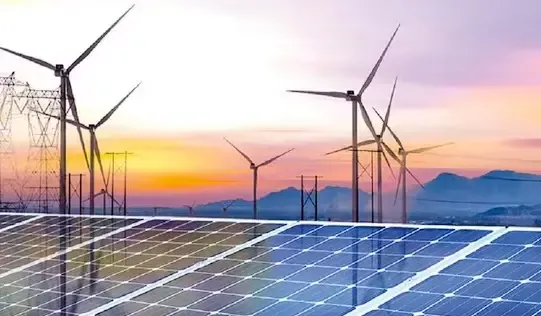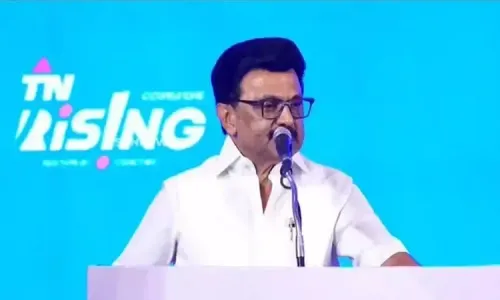India Steps into 2025 as a Beacon of Green Energy with 214 GW Capacity: Pralhad Joshi

New Delhi, Jan 1 (NationPress) As India welcomes the New Year, it concluded 2024 with a remarkable 214 GW of installed green energy capacity, according to data from the Ministry of New and Renewable Energy. The nation is on a solid trajectory to meet its ambitious goal of achieving 500 GW energy capacity from non-fossil fuels by 2030.
From April to November of the previous year, India added nearly 15 GW of renewable energy capacity, nearly double the 7.57 GW added during the same timeframe in the previous year.
“As we enter 2025, India stands as a global beacon of sustainable development. Our accomplishments are not just about achieving targets; they are about envisioning new possibilities for the global energy transition,” stated Union Minister of New and Renewable Energy, Pralhad Joshi.
India surpassed the 200 GW mark in total installed renewable energy capacity in September 2024. The total installed non-fossil fuel capacity rose to 214 GW in November, reflecting an increase of over 14 percent compared to 187.05 GW in the same period last year.
“Under the visionary leadership of Prime Minister Narendra Modi, 2024 has been a significant milestone in India's renewable energy journey. Our achievement of over 214 GW from non-fossil sources is not just a figure – it showcases our nation's steadfast commitment to achieving our ambitious goal of 500 GW by 2030,” Joshi added.
The nation’s solar energy capacity reached 94.17 GW in 2024, while wind energy capacity stood at 47.96 GW. As of November 2024, the cumulative total of installed and planned solar projects reached 261.15 GW, indicating a robust pipeline for future growth in the solar sector.
In just 10 months since its launch, the ‘PM Surya Ghar: Muft Bijli Yojana’ (PMSGMBY) has achieved an impressive 7 lakh installations — averaging 70,000 per month. This represents a tenfold increase in monthly installations compared to the average of 7,000 per month before the scheme's launch in February 2024.
States including Gujarat, Maharashtra, Kerala, and Uttar Pradesh have shown remarkable progress, reflecting strong infrastructure and collaboration among stakeholders.
Launched with an investment of Rs 75,021 crore, the scheme aims to install rooftop solar in one crore households, providing up to 300 units of free electricity monthly and offering subsidies ranging from Rs 30,000 to Rs 78,000 per household.
The government has also rolled out guidelines for 'Incentives to DISCOMs' with an allocation of Rs 4,950 crore, focusing on net meter availability and installation assistance.
Significant progress has been made under the PM KUSUM scheme, with over 2.95 lakh standalone off-grid solar water pumps installed to assist farmers in establishing 10,000 MW decentralized solar plants on their properties.
Additionally, 35 lakh grid-connected agriculture pumps have been solarized under this initiative, contributing to approximately 11.34 GW of solar energy capacity installed from January to November 2024.
On the wind energy front, as of November 2024, India's cumulative wind power capacity reached 47.96 GW. The total installed and planned wind energy projects amounted to 74.44 GW, driving ongoing advancements in renewable energy. Gujarat, Karnataka, and Tamil Nadu have emerged as the leading states for wind capacity additions during the FY 2023-24.
The ministry is also actively implementing the National Green Hydrogen Mission, which has been approved with a budget of Rs 19,744 crore. This mission aims to position India as a global hub for the production and export of green hydrogen.









